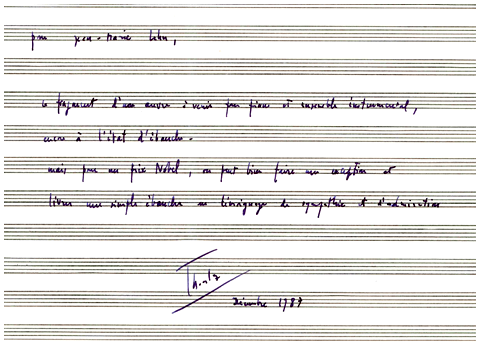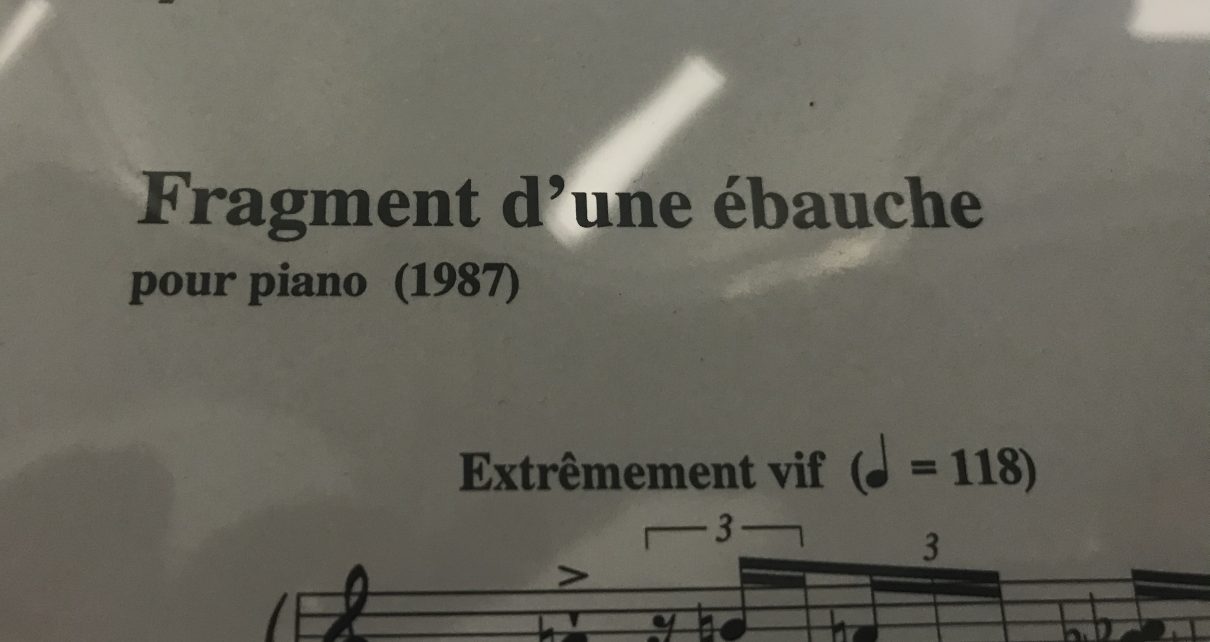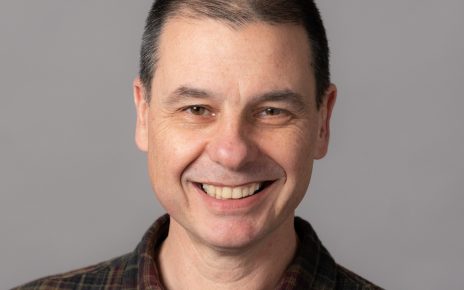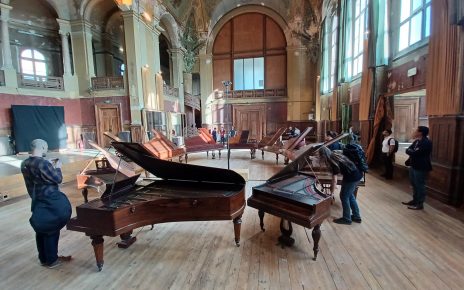To commemorate the five year anniversary of Boulez’s passing, we post his Fragment d’une ébauche (trans. Fragment of a draft), dedicated to his friend Jean-Marie Lehn in 1987 on the occasion of Lehn’s Nobel Prize in Chemistry.
“The fragment of a future work for piano and instrumental ensemble, still in draft form. But for a Nobel Prize winner, one can make an exception and give a simple draft as a token of friendship and admiration.” ~ Pierre Boulez

Boulez, a renowned composer-conductor and founding director of IRCAM, had “a reputation for writing music that was difficult, even impossible, to perform” and that “non-repetition, ‘anarchic’ (that is, anti-tonal) intervals and contrapuntal construction” were the hallmarks of his musical style (Guardian obituary).
The piece was published by Universal Edition Wien and received its world première by pianist Wilhem Latchoumia on 29 September 2013 at the MUSICA Festival in presence of Pierre Boulez and Jean-Marie Lehn. Also present were composer Philippe Manoury and festival director Jean-Dominique Marco.


Before hearing Latchoumia’s interpretation, Chew made a simple recording of the piece. The recording received thought-provoking remarks from Lehn and Manoury.
Lehn: You bring out very well a rhythmic structure, that was not easy to perceive. May I say that it has some Bartokian flavor ?
Manoury: I just had a look on the tempo notation. On the manuscript it is written quarter = 116 and in the engraved score quarter = 118 which is not a big difference. But in your recording it appears that you are around 8th = 135 (which is quarter = 67/68). It is not “extrêmement vif” but “moderato”. In fact I would prefer your tempo because, except the fact that the piece is not really playable in the Boulez’s tempo indication, your version give more clarity to the different structures (chords, monodic melodies in 16th note and figures in sextuplet). That is an interesting subject of discussion. Boulez, as a conductor, was very well known for the clarity of the structures, but, as a composer, he frequently wanted to hide the compositional structures which was the basis of its constructions. What is your opinion about the tempo of this piece ?
To hear what the piece might sound like at tempo, while preserving clarity of structure made possible by a slower tempo, the recorded MIDI was sped up 30% and re-played on No. 42, the Bösendorfer Enspire PRO piano.
Lehn: Indeed the notated tempo is faster than the one you took, but I also prefer it for the same reasons as I already noted. The 30% accelerated version still shows well the structure, but I still prefer your version. It reminds me of Beethoven’s very fast tempo notations of the Hammerklavier, as played by Arthur Schnabel. Most (if not all) other great pianists take it a slower speed.
Manoury: This version is close to the tempo that Boulez wanted, but the precision of the dynamics and rhythms is of course, out of human capacities.
Having heard the 30% sped up version, Chew tried her hand at emulating its extrêmement vif. The result was v.3. We now think both speeds are fine!
This little experiment raised the questions: Should the piece be played at tempo or slower, to reveal which structural details? How does the hybrid (artificially sped up) fast version differ from the wholly human one? How does the tempo change the structures performed and perceived?
Thanks to Jean-Marie Lehn for permission to post the handwritten dedication from Pierre Boulez, and for photos from the première.




